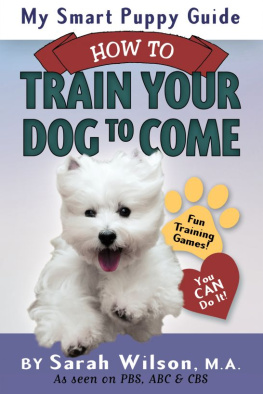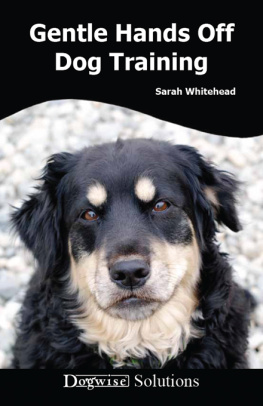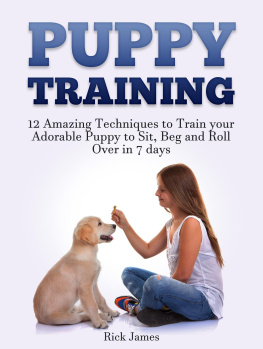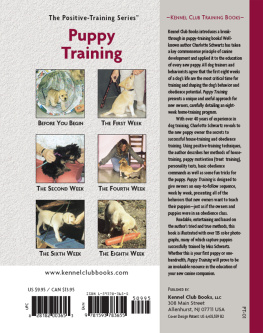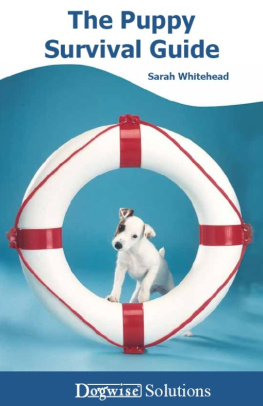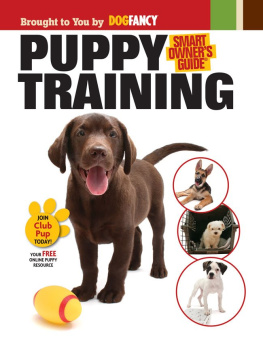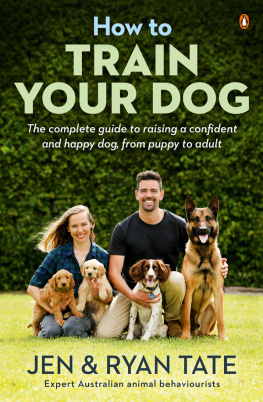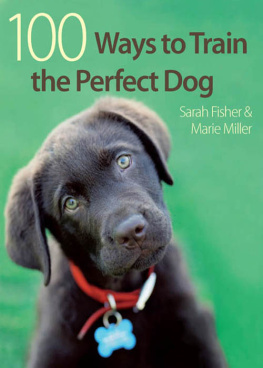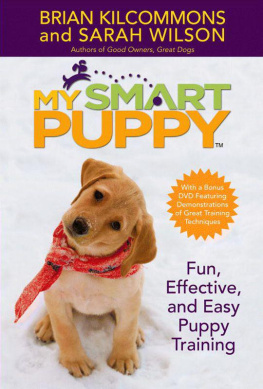My Smart Puppy Guide:
How to Train Your Dog to Come
Sarah Wilson, M.A.
Copyright 2013 by Sarah Wilson, M.A.
Smashwords Edition
All rights reserved. No part of this book may be used or reproducedin any manner whatsoever without written permission, except in thecase of brief quotations embodied in critical articles or reviews.Please do not participate in or encourage the piracy of copyrightedmaterials in violation of the authors rights. Purchase onlyauthorized editions.
Cover design by goodlifeguide.com
Special thanks to my dear friends(some of whom are family, too) for your encouragement, questions,feedback, edits, and all-around support. Without you this book (andmy life) would be so much less.
CONTENTS
PREFACE
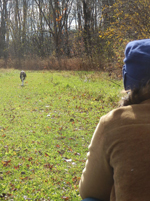
My friend Melissa and I walk together,chatting. The fall colors surround us and the grassy field spreadsahead, bending to the right. Pip, my beloved dog, is a speck in thedistance as she follows the field out of sight. Since I have noidea what is around that curve, I call her. Instantly, a black blurstreaks into view. Ears back, head extendedshe floors it gettingback to me.
I squat down. This sort of obedience, evenafter seven years together, deserves a major praise party. I clapmy hands, cheering her on. Melissa shoots this picture over myshoulder.
Such moments embody why I teach my dogs tolove coming when called. A great response like this one allows meto give Pip freedom while also helping me to keep her safe.
Also, training is fun for both of us. Toooften, dog training is more like a military exercise or a scienceexperiment than a play date between two friends. If we all have funteaching our dogs, I believe more dogs will be trainedand trainedwell. So, go for it! Have fun!
Using the games in this book, Pip and I had ablast learning this together. Coming when called is an opportunityfor us to enjoy each other. Pip, Come! are two of her favoritewords. In fact, she loved them so much as a puppy that she took topausing on our walks while I went ahead just so I would call her tome. Pip, Come! is a gift I have learned to give her, and herresponse is a gift she has learned to give to me.
I wrote this book to pass these gifts onfromPip and me to your dog and you. I hope you have great fun learningtogether.
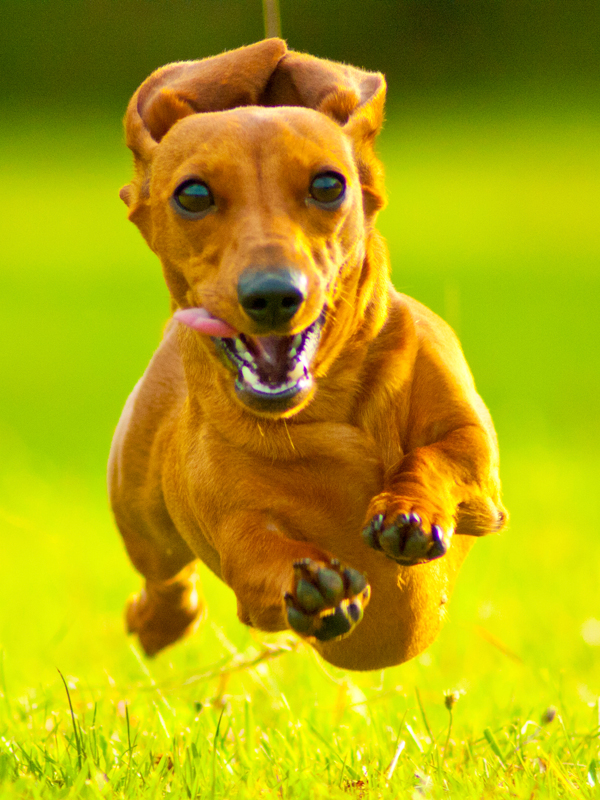
CHAPTER ONE
START HERE: THE THREE PARTS OF COME!
People say to me, All I want is for my dogto come to me off leash, to which I respond, That is like saying,All I want is for my child to play at Carnegie Hall. And how doyou get to Carnegie Hall? As the old joke says, Practice, practice, practice!
In order to practice effectively, we have toknow what to practice. Going out in thebackyard, letting your dog loose, then calling him before either ofyou knows exactly what to do is, more often than not, practicingfailure. Its like your child banging on the piano keys; he can dothat forever but hell never get any better, will he?
And his failure to improve isnt proof thathes difficult or stupid or even bad at piano. Its only proof thathe hasnt gotten the coaching he needs to practice productivelyandonly productive practice produces progress.
Your dog learns what you mean by Come whenhe links those words with the action of coming to you. It doesntmatter how many dozens or even hundreds of times youve called himbefore. If you havent known what to do and he hasnt actually doneit, then it was just banging on the proverbial keys.
In order to teach Come so your dogunderstands, you need to see it as a three-step process in whichyour dog:
Turns away from whatever he is doing.
Runs back to you.
Stops within reach.
When your dog does each of these parts well,he will come when you call him. To create that result, we need toteach each piece separately. Heres a quick overview.
STEP 1 - TURNS AWAY
To come when called your dog must turn awayfrom whatever he is doing and look back at you. And heres the rub:dogs do not know how to turn away fromdistractions. Really and trulyThey. Do. Not. Know. How.Understanding this changed everything I did as a trainer.
Not only do dogs have no clue how to turn away from temptation, many dog breeds arebred not to. They were designed to stay relentlessly focuseddespite all distractions. You can, as you probably already know,yell Come! repeatedly without your dog even glancing in yourdirection. The good news? Dogs cansurprisingly quicklylearn howto turn away. Using the games here, they can even learn to see thedistractions themselves as the command tolook at you. For example, your dog sees a squirrel and looks up atyou instead of lunging forward.
Stop laughing. It can happen.
In fact, that is a normal result of the gamestaught in . And once your dog sees somethingand starts to turn away on his own, your life (and his) just gotbetter.
STEP 2 - RUNS BACK
In a perfect world, after your dog turns awayfrom whatever he was doing, he races back to you, like Pip did, attop speed without stopping along the way to sniff or wander. Thatis our goal, and that is exactly what the gamesteach. They create desire in your dog to race all the way back toyou. These games are fun for both ends of the leash and criticalwhen it comes to Come.
I use a dogs name when I call them. My logicis that dogs spend a lot of their life ignoring our generalconversation. It seems fair to me that I alert them that I amtalking to them directly by using their name at such moments. Whentalking about them to other people, I use nicknames. Thiseffectively saves their name for when I really want theirattention.
Throughout the book, Ive used Name, Come!because thats the best way I can think of to remind you to useyour dogs name in this way.
STEP 3 - STOPS WITHINREACH
It is disappointing (and really annoying)when your dog races back to you, then continues right on past ordances playfully just out of reach. Some dogs seem to knowto thecentimeterjust how long your arms are. Teaching a dog to stopclose to you can easily be taught once you know how, and gives you that know-how.
Lets get started!

CHAPTER TWO
TURNS AWAY
Pip spots the off-leash dog ahead and,without a word from me, turns her head to glance up at my face. Irespond with a smile while praising her warmly as we turn inanother direction. With Pip, as with hundreds of other dogs I havetrained, that head turn away from the distraction and up at me hasbecome nearly automatic. Seeing anything she finds interesting isthe command for her to look up.
One of my favorite examples of this was thefirst time she saw a rabbit. When I moved to St. Louis, I hadrabbits around my yard like most cities have pigeons in the parks.Pip had never seen a rabbit. When she did, she froze andthen...looked at me. Even when I was in the house, Id glance outthe window and see her motionless in the backyard, glancing overher shoulder toward the door. Pips a true believer (and a veryfunny dog). Now, I am not saying most dogs would take it to herlevel, but most will learn to check back with you before they lungeforward as a result of the two games you are about to learn.
This chapter is for you if yourdog:

